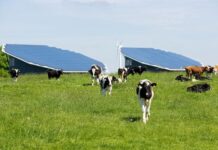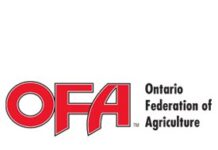Larry Davis, Director, Ontario Federation of Agriculture
As the days start to get warmer, farm equipment across the province will begin hitting the roadways for planting season. Many farmers spend a lot of time on the road throughout the spring, travelling long distances between fields and back to their farms. Similar to the farm, there are several best practices and protocols to follow to ensure the safety of all vehicles on the road, and the Ontario Federation of Agriculture (OFA) reminds everyone to remember the rules of the road and take the time to put safety first.
Farm and road safety has always been a top priority for OFA. Following proper road safety procedures helps to ensure farmers, as well as motorists, stay safe. To farmers, travelling on the road with large equipment is part of doing business and a necessary day-to-day task of spring planting. As we begin to move our farm equipment out of the barn and onto the road, it may be time to pause, talk to everyone on your farm team and consider the many steps we can take to ensure our roadways remain safe.
Some roads, bridges and traffic circles aren’t built to accommodate heavy machinery and a lot more motorists are increasingly impatient around slow-moving vehicles. It is our job as the drivers of our farm equipment to ensure we are doing everything we can to ensure safe travel.
It is important to always ensure that your farm tractors, combines or other self-propelled implements have a visible slow-moving vehicle (SMV) sign on the back of your equipment. It is also important to use lights, taillights and signals to make your equipment visible to all motorists. While you are required to use lights on equipment from 30 minutes before sunset to 30 minutes after sunrise – why not keep them on all the time, then you’ll always be visible.
Turning may pose many safety risks if you are not properly using your signals. When slowing down and making your turn, it is vital to indicate this movement to the motorist behind you to prevent collisions or confusion. I tell my employees to be extra cautious during left-hand turns. In my experience, I have seen many motorists try to pass farm equipment, not seeing that they’re preparing to make a left-hand turn. Therefore, it is essential to always be cautious and use your indicators when turning on roadways. I often advise my employees to take the time to check twice when turning on and off busy roadways to remain safe.
Another aspect of safety is to always remain alert and aware of your surroundings. I always encourage my employees to stay alert, regardless if there are other vehicles on the road. Attentive drivers are safe drivers. OFA encourages all farmers to keep it hands-free and stay off smartphone devices while operating farm equipment. The road requires our full attention to ensure safe trips. Although our equipment may look different, we are still required to follow the rules of the road.
On the road, it’s important to drive your equipment on the main part of the highway. It is not illegal to drive on the shoulder, but it can be dangerous as it may not support the weight of your equipment. When driving on back roads, there may be cases where a sign indicating a soft shoulder is not present. By driving towards the middle of your lane, you ensure that your farm equipment remains safe and on the road.
OFA also encourages farmers to be mindful of their speed and stopping times. Many of us travel with heavy loads that have the capability to overpower our brakes. It is imperative to watch our stopping times and ensure that we are mindful of the distance between vehicles and steep grades. It’s also important to remember that all farm equipment on the road, including trucks that are towing farm implements, must not exceed the 40 km/h speed limit.
Lastly, always complete your safety checks to confirm that your farm equipment is safe to drive on the road. Check that your brakes and lights are working correctly, and be sure that every piece of farm equipment travelling on roadways has a slow-moving vehicle sign that is visible to motorists. Following these best practices and regulations will help make sure that everyone has a safe and productive planting season. Remember to take the time to put safety first on the roadways, on your farm and for your family.
For additional information on road safety, visit ofa.on.ca/roadsafety or check out our fact sheets on transportation.


